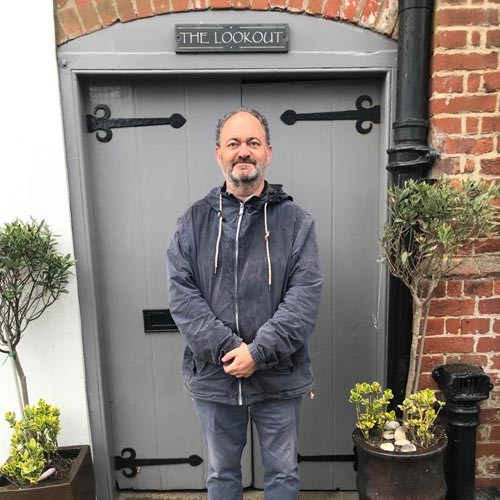Start Licensing’s Ian Downes reports back from a successful two days at last week’s Autumn Fair.
Last week I spent two days at Autumn Fair at the NEC. For me both the Autumn and Spring Fairs are really important shows – we have a lot of licensing partners exhibiting and I find it a good source of new ideas. The shows may not be on the scale they were in previous years, but my feeling is that they are still a vital part of the gift industry and provide a great showcase for exhibitors. The show organiser is working hard to add new content to the show and to support the wider gift business.
One category of exhibitor that I think a show like Autumn Fair is vital for are start ups and ‘young’ businesses: shows like this provide them with an entry point to the industry and an opportunity to meet buyers. Anecdotal feedback I had from exhibitors I spoke to suggested they had some worthwhile meetings with retailers with good representation from independents, heritage sector buyers and specialist retailers. I think the show was also had a good presence of buyers from online retailers reinforcing the fact that ecommerce is growing ever more important in the retail mix.
From a licensing point of view I noted a few highlights and trends:
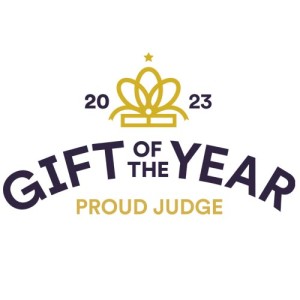 It is interesting to see how brands from the food and drink category are more visible in the gifting category through licensing deals.
It is interesting to see how brands from the food and drink category are more visible in the gifting category through licensing deals.
Guinness featured on the Lagoon Games stand with a range of puzzles and boxed games, while Kimm & Miller’s Grow Your Own Heinz Tomatoes kit was one of the products featured on the Gift of the Year showcase. I think the Giftware Association is doing a great job of promoting and supporting the Gift of the Year awards and it is good to see how some companies are using their success in it to create additional momentum for their businesses.
I am pleased to be a judge again for the Awards and look forward to reviewing the entries in the future.
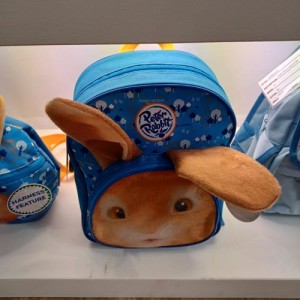 It was good to see accessories and footwear licensee William Lamb at the show. It is a long-term licensee but hasn’t stood still in regards to the type of licences it works with and also in regards to innovation in product design terms. There were some great examples of new design styles in its bag and backpack ranges. For example a number of products such as Peter Rabbit feature details such as plush ears, while other developments include integrating a play mat into backpacks including in the Peppa Pig range and the Disney Princesses range included a 3D Skirt detail.
It was good to see accessories and footwear licensee William Lamb at the show. It is a long-term licensee but hasn’t stood still in regards to the type of licences it works with and also in regards to innovation in product design terms. There were some great examples of new design styles in its bag and backpack ranges. For example a number of products such as Peter Rabbit feature details such as plush ears, while other developments include integrating a play mat into backpacks including in the Peppa Pig range and the Disney Princesses range included a 3D Skirt detail.
It is encouraging to see licensees thinking about design in this way and adding value to products. I think this helps sustain consumer interest and I think it also opens up retail opportunities. Connected to this, I suspect more retailers are asking for exclusive designs and products so developments like this help in regards to fulfilling retailer requirements.
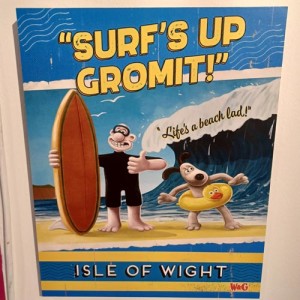 From my own perspective it was good to see new licensee Zippy & George launching its range of Aardman-themed wooden signs and wall art plaque. Aardman and Start Licensing have worked closely with it to build a range of products that can be customised to specific customers. It has embraced the licensing opportunity well and its NEC stand was a fantastic showcase for its entry into the world of licensing. From my perspective I think it is vital to spend time nurturing new entrants to the licensing market – hopefully Zippy & George succeed and licensing helps it grow the business. Early signs (boom boom) are encouraging and it seems licensing has opened up a raft of fresh retail discussions.
From my own perspective it was good to see new licensee Zippy & George launching its range of Aardman-themed wooden signs and wall art plaque. Aardman and Start Licensing have worked closely with it to build a range of products that can be customised to specific customers. It has embraced the licensing opportunity well and its NEC stand was a fantastic showcase for its entry into the world of licensing. From my perspective I think it is vital to spend time nurturing new entrants to the licensing market – hopefully Zippy & George succeed and licensing helps it grow the business. Early signs (boom boom) are encouraging and it seems licensing has opened up a raft of fresh retail discussions.
Similarly it is good to see the progress PlayPress has made – it has RNLI, Shaun the Sheep and Gruffalo licences. The products are cardboard construction kits and are made from sustainable materials. It also featured on the Products of Change and Power of One curated area at the show. It was good to see the Autumn Fair supporting and promoting Products of Change and sustainability.
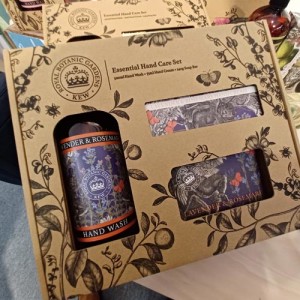 One range that I saw that I thought was a great example of brand licensing was The English Soap Company’s Royal Botanic Gardens KEW range of soaps and toiletries. The product was presented very well on its stand. The overall look and presentation of the range which includes soap bars, hand washes, hand creams and body oils was excellent, really vibrant and used the KEW branding really well. It felt very authentic.
One range that I saw that I thought was a great example of brand licensing was The English Soap Company’s Royal Botanic Gardens KEW range of soaps and toiletries. The product was presented very well on its stand. The overall look and presentation of the range which includes soap bars, hand washes, hand creams and body oils was excellent, really vibrant and used the KEW branding really well. It felt very authentic.
I liked the choice of fragrances and combinations such as Fig & Grape, Summer Rose and Jasmine Peach. The range included gift sets. It was merchandised well on stand making it easy for retailers to visualise the product in their shops. I am not sure how long this partnership has been running for, but it is certainly one that is a great example of brand licensing. As you might expect the stand and the product also smelt very nice!
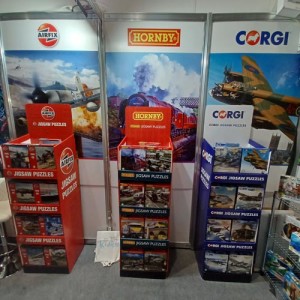 Another great example of brand licensing was a range of jigsaw puzzles developed by Kidicraft featuring Hornby, Airfix and Corgi. The products feature design elements such as artwork illustrations from original packaging and also product photography. For Kidicraft it is a great way of featuring well known and trusted toy brands on the products and gives it access to a great artwork catalogue. For Hornby, Airfix and Corgi it is a great crossover product and one that will also get them visibility in some retailers where the core products don’t currently feature but hold some potential.
Another great example of brand licensing was a range of jigsaw puzzles developed by Kidicraft featuring Hornby, Airfix and Corgi. The products feature design elements such as artwork illustrations from original packaging and also product photography. For Kidicraft it is a great way of featuring well known and trusted toy brands on the products and gives it access to a great artwork catalogue. For Hornby, Airfix and Corgi it is a great crossover product and one that will also get them visibility in some retailers where the core products don’t currently feature but hold some potential.
The products were also displayed in branded FSDUs – this seems to be more and more common now. Licensees are having to think about display and offer retailers opportunities to maximise their space. In this context well known brands have an increased value as they command consumer attention. Related to this companies like Abysse are also offering new packaging formats to broaden their product reach and usage. For example it had a poster pack featuring two posters in a box format that was display friendly, compact and also practical from a product pick up point of view. Increasingly licensees will need to be thinking about how, when and why consumers are buying products and providing practical solutions for these occasions.
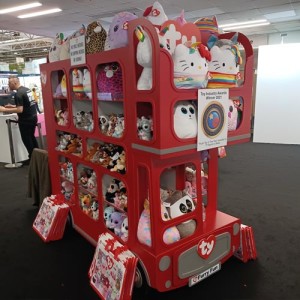 Another example of companies thinking about display was Ty’s display bus – an example of this was positioned near one of the hall entrances and was filled with stock. It was good to see licensees thinking about retail ‘theatre’ in this way.
Another example of companies thinking about display was Ty’s display bus – an example of this was positioned near one of the hall entrances and was filled with stock. It was good to see licensees thinking about retail ‘theatre’ in this way.
It was also good to see how Ty has developed new product formats such as Ty Squish-a-Boos and how licences such as Hello Kitty and Paddington feature in this range.
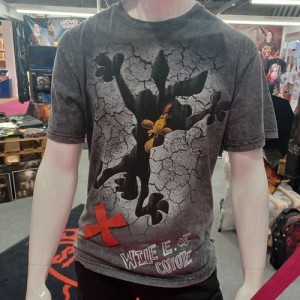 It was also good to see how apparel company Spiral Direct has developed a distinct design style for brands such as Looney Tunes. It has developed a distinct design look which nods to gothic styling and puts the characters into new design settings. This style will open up new channels of distribution for Looney Tunes and will appeal to different consumers from more mainstream design styles. It is recognition that consumers have differing tastes and wants design wise. It also reflects that different retail channels are emerging including ecommerce, direct selling and independents who need different types of designs and styles, but also understand the pulling power of well known character brands. Design styles like Spiral Direct’s may also inspire NPD in other product categories.
It was also good to see how apparel company Spiral Direct has developed a distinct design style for brands such as Looney Tunes. It has developed a distinct design look which nods to gothic styling and puts the characters into new design settings. This style will open up new channels of distribution for Looney Tunes and will appeal to different consumers from more mainstream design styles. It is recognition that consumers have differing tastes and wants design wise. It also reflects that different retail channels are emerging including ecommerce, direct selling and independents who need different types of designs and styles, but also understand the pulling power of well known character brands. Design styles like Spiral Direct’s may also inspire NPD in other product categories.
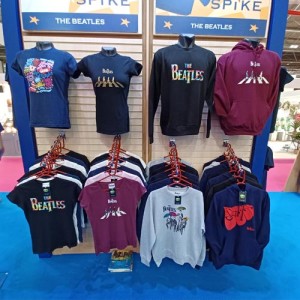 It was also interesting to see the ongoing presence and success of companies such as Spike. Spike specialises in apparel with a focus on products such as t-shirts and socks. It has been a long-term supporter of the show and the gift industry. Licensing is a core part of its offer and it takes a long-term approach to licensing. A key brand for it is The Beatles and it has kept the range fresh by adding new designs over the years. The Beatles is a great example of a brand that has achieved longevity in the licensing market in part by showing a commitment to design refreshment and by working with long-term partners like Spike to build the licensing programme. The Beatles and Spike range is a great example of a licensing partnership working over the long-term.
It was also interesting to see the ongoing presence and success of companies such as Spike. Spike specialises in apparel with a focus on products such as t-shirts and socks. It has been a long-term supporter of the show and the gift industry. Licensing is a core part of its offer and it takes a long-term approach to licensing. A key brand for it is The Beatles and it has kept the range fresh by adding new designs over the years. The Beatles is a great example of a brand that has achieved longevity in the licensing market in part by showing a commitment to design refreshment and by working with long-term partners like Spike to build the licensing programme. The Beatles and Spike range is a great example of a licensing partnership working over the long-term.
It was also interesting to see how properties such as Stranger Things are growing in popularity – apparel is a core part of the Stranger Things programme. Fashion UK and Heroes Inc are working together to deliver a range that appeals to specialist and independent retailers. Retailers who are in touch with fans and are able to respond to fast developing opportunities.
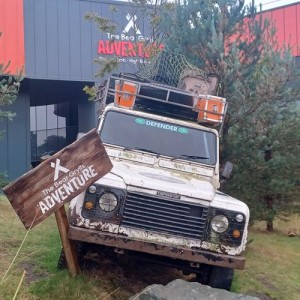 Though not part of the show itself I couldn’t help but notice The Bear Grylls Adventure during my NEC visit. The indoor/outdoor activity centre features themed areas and activities such as archery, an assault course, escape rooms, high ropes and a climbing wall. All presented and themed under the Bear Grylls brand this is a really good example of how licensing is making its mark in the live events category.
Though not part of the show itself I couldn’t help but notice The Bear Grylls Adventure during my NEC visit. The indoor/outdoor activity centre features themed areas and activities such as archery, an assault course, escape rooms, high ropes and a climbing wall. All presented and themed under the Bear Grylls brand this is a really good example of how licensing is making its mark in the live events category.
It is also a reminder that sites like the NEC are thinking about ways they can have all year round appeal and usage. They have a lot of real estate and licensing is one way they can theme unused space in a progressive way.
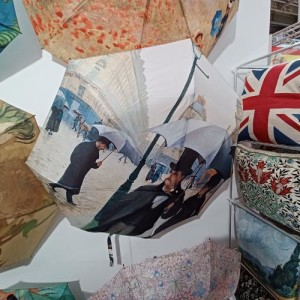 Finally I made my own virtual award at the Autumn Fair – it went to Signare for Best Use of a Painting Featuring Umbrellas. Signare is a bags and accessories company which works with heritage brands. It has developed an umbrella featuring the painting Paris On a Rainy Day – you’ve guessed it, the painting features Parisians with very elegant umbrellas.
Finally I made my own virtual award at the Autumn Fair – it went to Signare for Best Use of a Painting Featuring Umbrellas. Signare is a bags and accessories company which works with heritage brands. It has developed an umbrella featuring the painting Paris On a Rainy Day – you’ve guessed it, the painting features Parisians with very elegant umbrellas.
A great example of matching artwork to product and thinking about design detailing.
Ian Downes runs Start Licensing, an independent brand licensing agency. His Twitter handle is @startlicensing – he would welcome your suggestions for what to look out for.


















